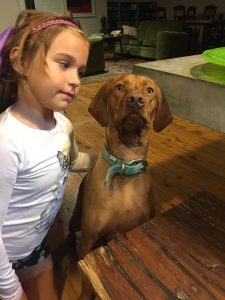
How to Create a Safe Relationship Between Your Children and a Pet Dog.
Have a pet dog is a wonderful thing for a family and for the dog. Dogs are great companions. Having a pet dog provides psychological benefits to children emotionally, behaviourally, educationally and socially.
Tragically, sometimes, it all goes wrong and children can be bitten, resulting in trauma for the family and the dog.
The aim of this article is to provide some insight into dog behaviour and what they are trying to tell us that, sometimes, we may interpret incorrectly.
Children need to be taught how to behave safely around all dogs; their own dog, their friend’s dogs and other dogs they come across. This involves understanding and reading canine body language and facial expressions.
It is a natural tendency to show affection to your pet by hugging and kissing them. Unfortunately, dogs find this intrusive and often scary, their personal space is being invaded. Dogs will be tolerant but, if the invasion continues and they are not in a positive emotional state, their reaction will be to bite. This will seem out of character but they will have being giving subtle warning signs which are being ignored and biting is the only defence they have left.
The same thing can happen if children are allowed to climb and sit on the dog. It looks cute and the dog may tolerate it for a while but if they are having a bad day or happen to have a sore back one day, their ‘emotional cup’ may overflow and the seemingly unpredictable bite may happen.
Children should be taught to never disturb the dog if it is sleeping. When a dog is woken, it may be cranky or just disorientated and may lash out before they realise what is going on.
Dogs should never be disturbed while they are eating, this includes when they are enjoying treats and bones.
Children should be taught, that when a dog is playing with a toy, not to remove the toy from the dog.
Canine body language includes firstly subtle displacement behaviours, these behaviours indicate that the dog is highly, emotionally aroused and act as a warning to not upset the dog further. Displacement behaviour includes; a dog shaking (like it would after a swim but in this case it is not wet), yawning and stretching and licking the lips or the owners face. (Sometimes mistaken for an affectionate kiss!).
Warning signs that a dog is angry or aggressive include, raised hackles (the hair on the back the neck and body standing up), ears back, showing teeth, pupils dilated, face muscles very tense, tail clamped down between the back legs, and wagging only the tip of the tail.
Children should be taught to respect the dog and know that even though it is a loved family member, it is not a human and canines have different emotional needs to humans and different ways of expressing their needs.